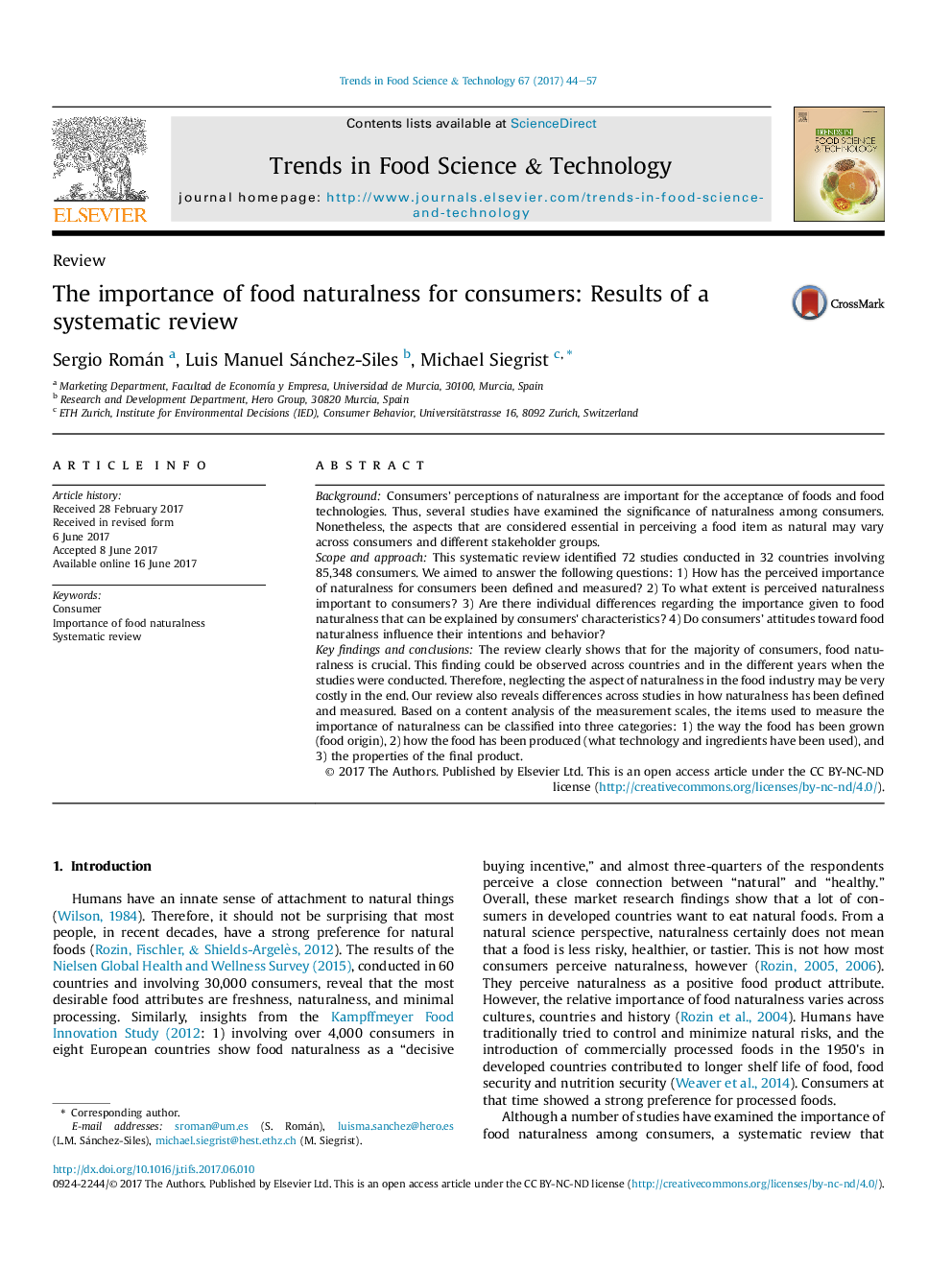| Article ID | Journal | Published Year | Pages | File Type |
|---|---|---|---|---|
| 5523595 | Trends in Food Science & Technology | 2017 | 14 Pages |
â¢Food naturalness is very important for consumers.â¢Studies differ in how naturalness has been defined and measured.â¢Naturalness can be classified in terms of food origin, production, and final product.â¢Consumers' food intake is significantly influenced by food naturalness importance.
BackgroundConsumers' perceptions of naturalness are important for the acceptance of foods and food technologies. Thus, several studies have examined the significance of naturalness among consumers. Nonetheless, the aspects that are considered essential in perceiving a food item as natural may vary across consumers and different stakeholder groups.Scope and approachThis systematic review identified 72 studies conducted in 32 countries involving 85,348 consumers. We aimed to answer the following questions: 1) How has the perceived importance of naturalness for consumers been defined and measured? 2) To what extent is perceived naturalness important to consumers? 3) Are there individual differences regarding the importance given to food naturalness that can be explained by consumers' characteristics? 4) Do consumers' attitudes toward food naturalness influence their intentions and behavior?Key findings and conclusionsThe review clearly shows that for the majority of consumers, food naturalness is crucial. This finding could be observed across countries and in the different years when the studies were conducted. Therefore, neglecting the aspect of naturalness in the food industry may be very costly in the end. Our review also reveals differences across studies in how naturalness has been defined and measured. Based on a content analysis of the measurement scales, the items used to measure the importance of naturalness can be classified into three categories: 1) the way the food has been grown (food origin), 2) how the food has been produced (what technology and ingredients have been used), and 3) the properties of the final product.
